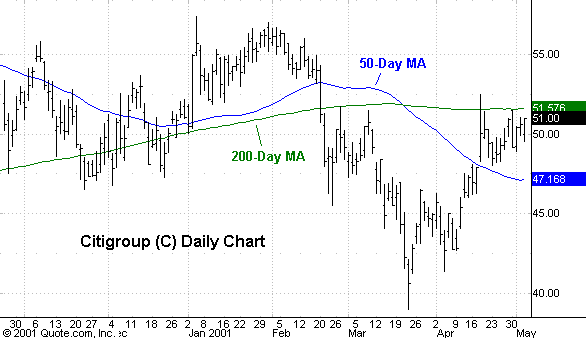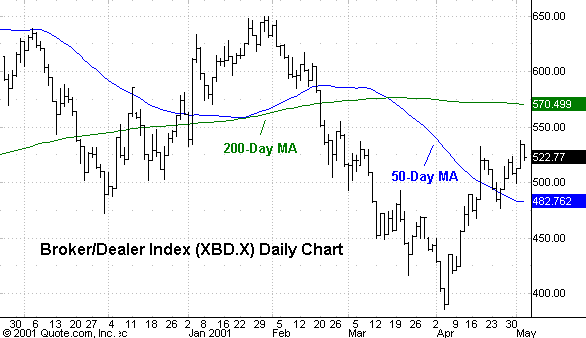How To Use Individual Stocks As Proxies For Major Indexes
One way to keep your eyes open for potential trades as new leadership emerges
in the market is to monitor the movements of the many different market sectors.
These can tip you off as to what groups might be emerging as tradeable setups,
and also offer you the chance to track the “big picture” economic
trends that can also lead you toward what groups might become the next winners.
Even more targeted than broader averages or specific sectors, there are
individual stocks that are giant, diversified conglomerates that mirror or even
lead their respective index or sector.
The past year has witnessed a great deal of sector rotation between
technology groups, defensive groups, cyclicals, pharmaceuticals, financials, and
the energy related groups. In fact, the speed with which this has occurred has
been unprecedented as has the volatility levels traders have experienced.
Global forces like the strength of the dollar, Japan’s ever-changing
political scene, and the rapid economic changes help create even more variables
that can make it difficult to keep track of what sectors are winning and what
sectors are losing.
In other words, it’s getting tougher as a trader to stay abreast of what is
really going on between sectors simply because there are so many extenuating
outside factors. Sectors have also grown more complex in that there is not just
a “tech” sector or a “financial” sector anymore, but instead
there can be many sub-sectors that can often move in opposite directions at the
same time. One way to narrow down that overwhelming amount of international and
domestic sector news and data is to focus on a few select stocks that are
proxies for an individual or a greater sector.
Obviously, if you are looking for individual stocks that act as a proxy for a
sector or average, it should have a big market cap and a fairly diverse business
that would be able to reflect the diverse make up of any given sector or larger
average.
By monitoring some of these individual stocks, they can sometimes tip you off
as to which way the broader average or sector might be moving. It is similar to
a dog sled where the lead dog is often the fastest dog in the group. By tracking
the leaders, you can potentially get a jump on which way a major average is
going to move. Likewise, an average that is falling apart may indicate future
problems for the lead dog as is the case with GE below.
Examples of “proxy” stocks incude General Electric
(
GE |
Quote |
Chart |
News |
PowerRating) for the
S&P 500, Citigroup
(
C |
Quote |
Chart |
News |
PowerRating) for both banking and the broker/dealers, and in the
tech realm, Microsoft
(
MSFT |
Quote |
Chart |
News |
PowerRating) or Intel
(
INTC |
Quote |
Chart |
News |
PowerRating), for the tech sector or
the Nasdaq.
Have a look at the S&P 500 below and notice how closely GE is correlated
with it. Notice that GE was late to fall with the S&P 500 and then was the
leader than seemed to crawl back up before the S&P 500.


Citigroup
(
C |
Quote |
Chart |
News |
PowerRating) is a global financial powerhouse that owns a
wide variety of banking, brokerage, and financial companies focused on all
economic demographics. Because of their global reach and diverse holdings
(Citibank, Primerica, Salomon Smith Barney), Citigroup is an excellent proxy for
financial stocks. Notice below how closely correlated Citibank is with both the
broker/dealer index and the banking index.


Â

In technology, the biggest and the best were flogged with the
rest of tech all last year, so for now the Microsoft, Intel, Cisco, and Sun
Micro group might seem questionable. But let’s face it, they will still play an
extremely important role in tech-land, and each one is definitely worth tracking
as a proxy for the greater tech sector. True, new tech leaders will likely
emerge, but these techs are already so large in terms of market cap that they
should be a part of any proxy for tech.
Well, those are just a few of the single stocks that can
represent and show the health of a sector or average. As you look for these
types of companies, look for a broad product base, a variety of revenue streams,
and a globally positioned sales structure. These factors will give your stock
more of a macroeconomic exposure and better allow it to gage the broader
averages.
Â
